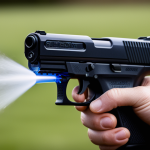Effective Techniques for UK MMA Fighters to Manage Adrenaline and Boost Performance
Managing adrenaline and optimizing performance are crucial aspects for Mixed Martial Arts (MMA) fighters, particularly those competing at the highest levels in the United Kingdom. This article delves into the strategies, techniques, and mental approaches that UK MMA fighters can employ to harness their adrenaline, enhance their performance, and gain a competitive edge in the combat sports arena.
Understanding Adrenaline in Combat Sports
Adrenaline, often referred to as the “fight or flight” hormone, is a natural response to stress and high-intensity situations. For MMA fighters, managing this adrenaline is pivotal to their performance.
Also to see : Essential Kumite Drills for UK Karate Enthusiasts: Master Your Performance!
Recognizing Adrenaline
Recognizing adrenaline as a positive force rather than a hindrance is the first step. As highlighted by experts, “by recognising these feelings as adrenaline, you enable a positive approach to managing the experience and welcome it compared to resisting it”[1].
The Role of Adrenaline in MMA
Adrenaline can enhance strength, speed, and agility, which are all critical in MMA. However, unmanaged adrenaline can lead to anxiety, decreased focus, and poor decision-making during a fight. Therefore, finding a balance is essential.
Also to discover : Unlock Peak Focus: Essential Techniques for Mental Sharpness in Extensive UK Karate Competitions
Breathing Techniques for Adrenaline Management
Breathing techniques are fundamental in managing adrenaline and maintaining a calm, focused state during high-stress situations.
Diaphragmatic Breathing
Diaphragmatic breathing, also known as belly breathing, is a powerful tool for MMA fighters. This type of breathing engages the diaphragm, the primary muscle used for breathing, which helps to slow down the heart rate and reduce stress.
- Pre-Fight Routine: Incorporate diaphragmatic breathing into your pre-fight routine to calm your nerves and focus your mind.
- During the Fight: Use short bursts of diaphragmatic breathing between rounds to regain composure and clarity.
- Post-Fight Recovery: Continue with deep, diaphragmatic breaths to help your body recover from the intense physical exertion.
Practical Breathing Exercises
Here are some practical breathing exercises that MMA fighters can incorporate into their training:
- Box Breathing: Breathe in for 4 seconds, hold for 4 seconds, exhale for 4 seconds, and hold again for 4 seconds.
- 4-7-8 Breathing: Breathe in through the nose for 4 seconds, hold for 7 seconds, and exhale through the mouth for 8 seconds.
Mental Toughness and Sports Psychology
Mental toughness is a critical component of an MMA fighter’s arsenal, enabling them to perform under high stress and pressure.
Building Mental Toughness
Mental toughness can be developed through various techniques:
- Visualization: Visualize yourself winning the fight, overcoming challenges, and performing at your best.
- Positive Self-Talk: Use positive affirmations to boost confidence and focus.
- Mindfulness: Practice mindfulness meditation to improve your ability to stay present and focused.
Sports Psychology
Sports psychology plays a significant role in helping MMA fighters manage their mental state. Here are some key insights:
- Pre-Fight Preparation: Work with a sports psychologist to develop a pre-fight routine that includes mental preparation techniques.
- Performance Anxiety: Address performance anxiety by understanding its roots and using strategies to manage it.
- Post-Fight Analysis: Analyze your performance post-fight to identify areas for improvement and reinforce positive behaviors.
Strength Conditioning and Interval Training
Physical conditioning is essential for MMA fighters to optimize their performance and manage adrenaline effectively.
Strength Conditioning
Strength conditioning helps build the physical resilience needed for high-intensity combat sports. Here are some key aspects:
- Weight Training: Focus on compound exercises like squats, deadlifts, and bench press to build overall strength.
- Functional Training: Incorporate functional training that mimics the movements and actions of an MMA fight.
- Core Strength: Develop strong core muscles, which are crucial for stability and endurance.
Interval Training
Interval training is a highly effective way to improve aerobic energy and anaerobic capacity, both of which are vital for MMA.
- High-Intensity Interval Training (HIIT): Incorporate HIIT into your training routine, which involves short bursts of high-intensity exercise followed by brief periods of rest.
- Aerobic Energy: Improve your aerobic energy through activities like jogging, cycling, or swimming to enhance your endurance.
- Muay Thai and Jiu Jitsu Drills: Use specific drills from Muay Thai and Brazilian Jiu-Jitsu to simulate the high-intensity intervals of an MMA fight.
Combat-Specific Techniques
In addition to general training and mental preparation, combat-specific techniques are crucial for managing adrenaline and boosting performance.
Hand Fighting and Positioning
Hand fighting and positioning are critical in MMA, as they set the stage for takedowns, submissions, and strikes.
- Underhooks and Overhooks: Master the use of underhooks and overhooks to control your opponent and create opportunities for takedowns or strikes.
- Dog Fight Position: Learn to transition into the dog fight position effectively, which can lead to knee picks or taking the back[2].
Takedowns and Transitions
Takedowns and transitions are key elements of MMA that require precise technique and timing.
- Knee Picks: Practice knee picks to quickly take down your opponent and transition into dominant positions.
- Back Takes: Learn to take the back of your opponent, which is a highly advantageous position for submissions and strikes.
Practical Insights and Actionable Advice
Here are some practical insights and actionable advice for UK MMA fighters looking to manage their adrenaline and enhance their performance:
Pre-Fight Routine
Develop a consistent pre-fight routine that includes:
- Breathing Techniques: Use diaphragmatic breathing to calm your nerves.
- Visualization: Visualize yourself performing well and overcoming challenges.
- Physical Warm-Up: Engage in a thorough physical warm-up to prepare your body for the fight.
During the Fight
- Stay Focused: Use positive self-talk and mindfulness to stay focused and present.
- Manage Adrenaline: Recognize and welcome adrenaline as a positive force, rather than resisting it.
- Adapt to Situations: Be prepared to adapt your strategy based on the flow of the fight.
Post-Fight Recovery
- Cool Down: Gradually cool down with light stretching and deep breathing to help your body recover.
- Reflect and Analyze: Reflect on your performance, identifying areas for improvement and reinforcing positive behaviors.
Table: Comparison of Breathing Techniques for Adrenaline Management
| Breathing Technique | Description | Benefits |
|---|---|---|
| Diaphragmatic Breathing | Engages the diaphragm, slowing down heart rate and reducing stress. | Reduces anxiety, improves focus, aids in recovery. |
| Box Breathing | Breathe in for 4 seconds, hold for 4 seconds, exhale for 4 seconds, hold again for 4 seconds. | Improves focus, reduces stress, enhances mental clarity. |
| 4-7-8 Breathing | Breathe in through the nose for 4 seconds, hold for 7 seconds, exhale through the mouth for 8 seconds. | Promotes relaxation, reduces heart rate, improves sleep quality. |
Quotes from Experts and Fighters
- “By recognizing these feelings as adrenaline, you enable a positive approach to managing the experience and welcome it compared to resisting it.” – The English Hypnotist[1]
- “Mental toughness is not just about being tough; it’s about being resilient, adaptable, and focused under pressure.” – Sports Psychologist
- “Interval training is key to improving your aerobic energy and anaerobic capacity, which are essential for the high-intensity nature of MMA.” – MMA Coach
Managing adrenaline and boosting performance in MMA is a multifaceted challenge that requires a holistic approach. By incorporating effective breathing techniques, building mental toughness, engaging in strength conditioning and interval training, and mastering combat-specific techniques, UK MMA fighters can optimize their performance and gain a competitive edge in the ring.
Remember, it’s all about perspective and how you choose to manage your adrenaline. By welcoming it as a positive force and using the right techniques, you can transform your energy into a powerful tool for success in the high-intensity world of MMA.


